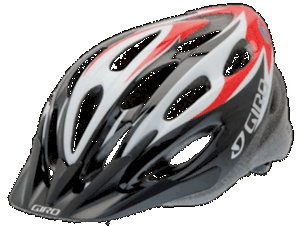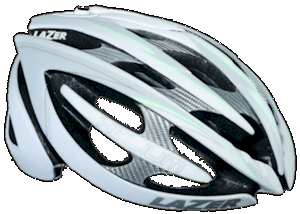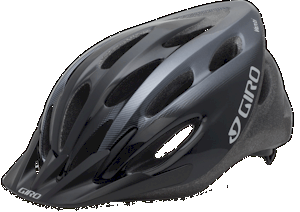Most people will regard a helmet as the most essential accessory after buying their first bike. But why do some helmets cost less than $40 and some over $200? In fact, is it worthwhile wearing a cycle helmet at all?

Ask any serious, recreational or utility cyclist if they wear a helmet and the answer will almost invariably be yes. A few will quote their Second Amendment Right to free expression, or the fact that in bicycle friendly societies such as in the Nederlands or Denmark almost no one wears a helmet and death and injury rates are lower.
This is true, but in those countries cycling as a means of transport, that is, used for commuting, shopping and short journeys as well as for recreation, has reached at least 30% of all journeys and attained what has become known as Critical Mass, where cyclists have such a high profile on the road that virtually no motorist can be other than totally aware of cyclists, and indeed, quite likely will be a cyclist themselves, or whose spouse, family and friends will be cyclists too.

It’s probably not controversial to say that New Jersey is not a bicycle friendly society. As for your right not to wear a helmet, you can consider that as you sip your Sunday dinner through a straw. However, in the State of New Jersey, children must wear a helmet – Title 39:4-10.1 – when cycling, in-line skating, roller-skating or skate-boarding.
So, why do some helmets cost $40 and some more than $200?
Any helmet you are likely to buy in your local bike shop will meet the minimum requirements of one or more major international standards agency at least. US, European and Australian standards are as good as they get. There are minor differences, but not ones which are likely to make any difference on the road or trail. So a less expensive helmet will be as safe as an expensive one, but a more expensive helmet will have more sophisticated features.

Some helmets are designed for a particular application. Mountain-bike helmets typically have a peak and slightly more protection to the back of the head. Road helmets lack the peak to enable better forward vision when on the drops. In practice there’s no problem using your helmet for whatever sort of riding you want. Some road riders feel that a peak keeps glare off their glasses. There are no rules. Buy a helmet you feel comfortable with.
A good basic helmet will only be available in one universal size. Most brands produce women specific models which may be a little smaller and have cradles which adapt to accommodate pony-tails.
Around the $80 mark, helmets become available in various sizes, usually, small/medium/large, and are starting to acquire more ventilation.

More expensive helmets will have compound internal structures which allow even better ventilation and lighter construction. The most expensive helmets will have more sophisticated and comfortable retention systems as well as accessories such as aero rain covers, visors and stowage bags. These are not characteristics which affect most cyclists, but it’s surprising how heavy your helmet can feel when riding a 12-hour or a Century event. You will know if it’s right for you to buy a $200 helmet.
As for that old helmet of your’s that’s been providing good service since 1990? All helmets degrade in sunlight, so after three or four years its capacity to protect will be severely compromised. If a helmet has already done its job and protected your head from a hit its internal structure, which is designed to absorb the shock, will not be effective again and should be replaced.

It’s your head … you decide … but we have many customers who tell us that while sliding along the road on their head, they have a very lucid thought; that the dollars they spent on their helmet were some of the best money they ever spent.
Halter’s stock helmets by: Bell, Cannondale, Giro and Lazer for everyone from toddlers to teenagers, casual riders to racers.
If you’re seeking information on other topics click on any item in Halter’s Tag Cloud in the right hand column of this blog …
Alan – That British Bloke








